Cyclosporine other names. Cyclosporine: Uses, Side Effects, and Essential Information
What are the main uses of cyclosporine. How does cyclosporine work in the body. What are the common side effects of cyclosporine. Why is cyclosporine considered an immunosuppressant drug. When should you seek medical attention while taking cyclosporine.
Understanding Cyclosporine: An Overview of the Immunosuppressant Drug
Cyclosporine is a powerful immunosuppressant drug used in various medical treatments. It’s available under several brand names, including Gengraf, Neoral, and Sandimmune, as well as in generic form. This medication comes in multiple formulations, such as oral capsules, oral solutions, eye drops, and injectable forms.
The primary functions of cyclosporine include:
- Preventing organ transplant rejection
- Reducing inflammation in active rheumatoid arthritis (RA)
- Treating severe psoriasis
Is cyclosporine available over the counter? No, cyclosporine is a prescription-only medication due to its potent effects and potential side effects. It requires careful monitoring and dosage adjustment by healthcare professionals experienced in immunosuppressive therapy.
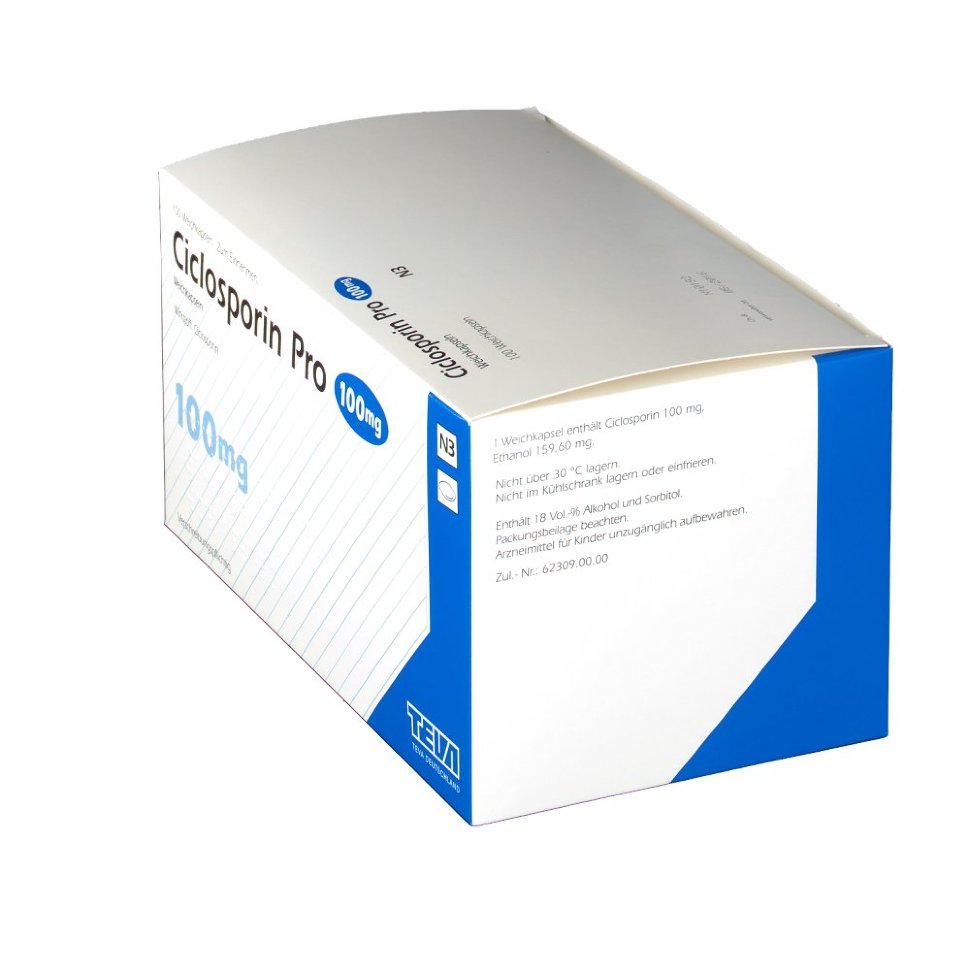
The Mechanism of Action: How Cyclosporine Works in the Body
Cyclosporine belongs to a class of drugs called immunosuppressants. These medications work by weakening the immune system’s response to foreign substances or, in some cases, the body’s own tissues.
How does cyclosporine specifically function in the body?
- It inhibits the activity of T-lymphocytes, a type of white blood cell crucial in immune responses.
- By suppressing T-cell function, it prevents the immune system from attacking transplanted organs.
- In autoimmune conditions like RA and psoriasis, it helps stop the immune system from mistakenly attacking the body’s own tissues.
This mechanism of action makes cyclosporine effective in preventing organ rejection and managing certain autoimmune disorders. However, it also increases the risk of infections and other side effects, necessitating close medical supervision.
Cyclosporine Formulations: Understanding the Differences
Cyclosporine is available in several formulations, each with specific characteristics and uses. The main types include:

- Sandimmune (cyclosporine non-modified)
- Neoral and Gengraf (cyclosporine modified)
Why can’t these formulations be used interchangeably? The modified versions (Neoral and Gengraf) have different absorption rates compared to the non-modified version (Sandimmune). This difference in bioavailability means that switching between formulations without medical supervision could lead to under- or over-dosing, potentially resulting in organ rejection or toxicity.
Key Points About Cyclosporine Formulations:
- Sandimmune’s absorption can become unpredictable with long-term use, requiring regular blood level monitoring.
- Neoral and Gengraf are absorbed more readily by the body compared to Sandimmune.
- Patients should never switch between formulations without consulting their healthcare provider.
Important Warnings and Precautions for Cyclosporine Use
Cyclosporine carries several boxed warnings, which are the most serious warnings issued by the FDA. These warnings highlight potential risks that patients and healthcare providers should be aware of:
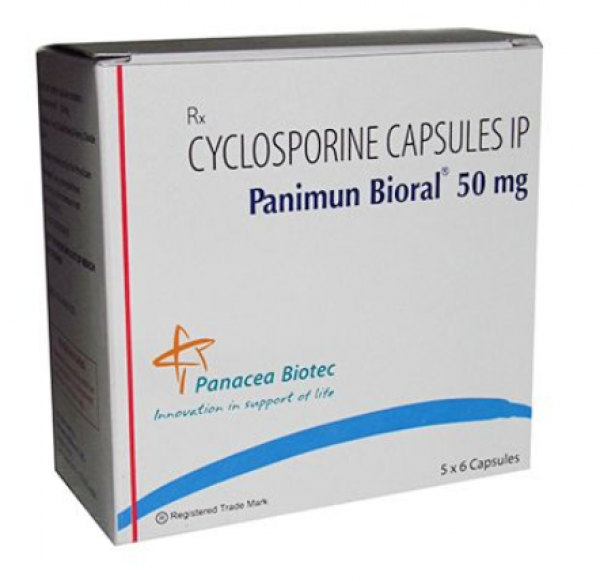
1. Infection Risk
How does cyclosporine affect infection risk? By suppressing the immune system, cyclosporine can increase the likelihood of serious infections. Patients should be vigilant about signs of infection and report them promptly to their healthcare provider.
2. Cancer Risk
Can cyclosporine increase cancer risk? Yes, long-term use of cyclosporine may elevate the risk of developing certain cancers, particularly skin cancers. Regular skin examinations are recommended for patients on cyclosporine therapy.
3. Skin Disease Warning
Patients with psoriasis who have undergone certain treatments (such as psoralen plus ultraviolet A therapy, methotrexate, coal tar, radiation therapy, or ultraviolet light therapy) may have an increased risk of developing skin diseases while taking cyclosporine.
4. Hypertension and Kidney Disease
Cyclosporine can cause or exacerbate high blood pressure and kidney problems. Regular monitoring of blood pressure and kidney function is essential during treatment.

5. Specialized Prescriber Requirement
Only healthcare providers experienced in managing systemic immunosuppressive therapy should prescribe cyclosporine due to its complex effects and potential risks.
Common Side Effects of Cyclosporine: What to Expect
While cyclosporine can be highly effective in its intended uses, it may also cause various side effects. Some of the more common side effects include:
- Hypertension (high blood pressure)
- Hypomagnesemia (low magnesium levels)
- Kidney complications
- Gastrointestinal discomfort
- Hirsutism (excessive hair growth)
- Acne
- Tremors
- Headaches
- Gingival hyperplasia (enlarged gums)
Are these side effects always severe? Not necessarily. Many patients experience mild side effects that may subside as the body adjusts to the medication. However, if side effects persist or worsen, it’s crucial to consult with a healthcare provider.
Serious Side Effects: When to Seek Immediate Medical Attention
While less common, cyclosporine can cause serious side effects that require prompt medical attention. These include:
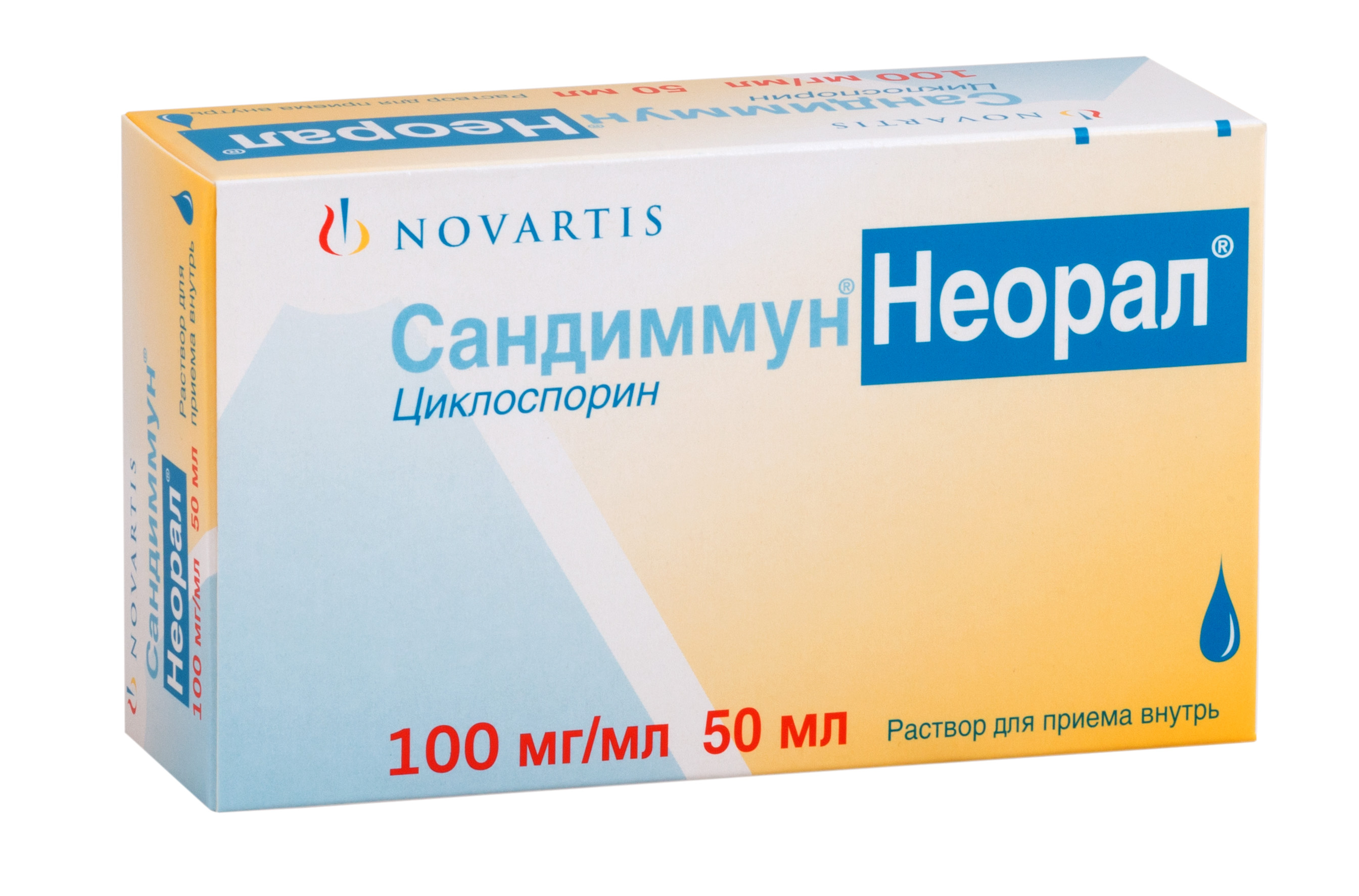
1. Liver Damage
What are the signs of liver damage? Symptoms may include:
- Blood in urine
- Dark urine
- Pale stools
- Jaundice (yellowing of the skin or eyes)
2. Severe Infections
Due to its immunosuppressive effects, cyclosporine can increase the risk of severe infections. Patients should be alert for signs such as:
- Persistent fever
- Chills
- Unusual fatigue
- Unexplained bruising or bleeding
3. Neurological Issues
In rare cases, cyclosporine can cause neurological problems. Symptoms to watch for include:
- Seizures
- Vision changes
- Confusion or disorientation
- Severe headaches
When should you contact your doctor about side effects? It’s important to seek immediate medical attention if you experience any of these serious symptoms or if mild side effects persist or worsen over time.
Drug Interactions and Precautions with Cyclosporine
Cyclosporine can interact with numerous medications and substances, potentially altering its effectiveness or increasing the risk of side effects. Some important interactions to be aware of include:

Medications that May Interact with Cyclosporine:
- Certain antibiotics (e.g., erythromycin, clarithromycin)
- Antifungal medications (e.g., ketoconazole, itraconazole)
- Some blood pressure medications
- Certain anticonvulsants
- St. John’s Wort (an herbal supplement)
How can you minimize the risk of drug interactions? Always inform your healthcare provider about all medications, supplements, and herbal products you’re taking before starting cyclosporine therapy.
Dietary Precautions:
Can diet affect cyclosporine’s effectiveness? Yes, certain foods and beverages can interact with cyclosporine:
- Grapefruit and grapefruit juice can increase cyclosporine levels in the blood, potentially leading to toxicity.
- High-potassium foods should be consumed in moderation, as cyclosporine can affect potassium levels.
Patients should discuss their diet with their healthcare provider to ensure it doesn’t interfere with their treatment.
Monitoring and Managing Cyclosporine Therapy
Due to its potent effects and potential for side effects, cyclosporine therapy requires careful monitoring and management. Here are some key aspects of ongoing care for patients on cyclosporine:
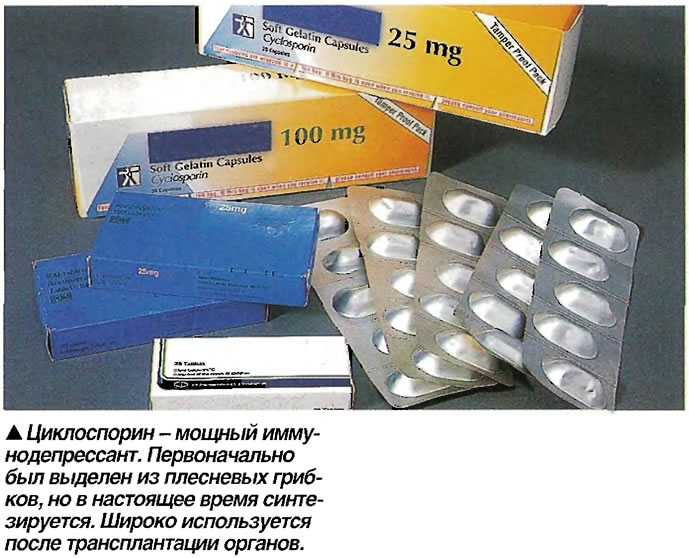
1. Regular Blood Tests
Why are blood tests important for cyclosporine patients? Regular blood tests help monitor:
- Cyclosporine levels in the blood
- Kidney and liver function
- Electrolyte levels
- Complete blood count
2. Blood Pressure Monitoring
Given cyclosporine’s potential to cause hypertension, regular blood pressure checks are essential. Patients may need to monitor their blood pressure at home and report any significant changes to their healthcare provider.
3. Skin Examinations
Due to the increased risk of skin cancer, patients on long-term cyclosporine therapy should undergo regular skin examinations. How often should these examinations occur? Typically, they’re recommended at least annually, but the frequency may increase based on individual risk factors.
4. Dental Care
Cyclosporine can cause gingival hyperplasia (enlarged gums). Therefore, maintaining good oral hygiene and regular dental check-ups is crucial.
5. Vaccination Considerations
Can patients on cyclosporine receive vaccines? Live vaccines are generally contraindicated for patients taking cyclosporine due to the suppressed immune system. However, inactivated vaccines may be recommended. Patients should discuss their vaccination needs with their healthcare provider.

How often should patients follow up with their healthcare provider while on cyclosporine? The frequency of follow-up appointments can vary based on individual factors, but typically, patients will need to see their provider regularly, especially in the initial months of treatment.
Special Considerations for Cyclosporine Use in Specific Populations
Cyclosporine use requires special consideration in certain populations due to potential risks or altered effects. Here are some important points to consider:
Pregnancy and Breastfeeding
Is cyclosporine safe during pregnancy? Cyclosporine crosses the placenta and may pose risks to the developing fetus. However, in some cases, the benefits may outweigh the risks, particularly for organ transplant recipients. Women who are pregnant or planning to become pregnant should discuss the risks and benefits with their healthcare provider.
Can cyclosporine be used while breastfeeding? Cyclosporine is excreted in breast milk and may affect the nursing infant. The decision to breastfeed while taking cyclosporine should be made in consultation with a healthcare provider, weighing the benefits of breastfeeding against potential risks to the infant.
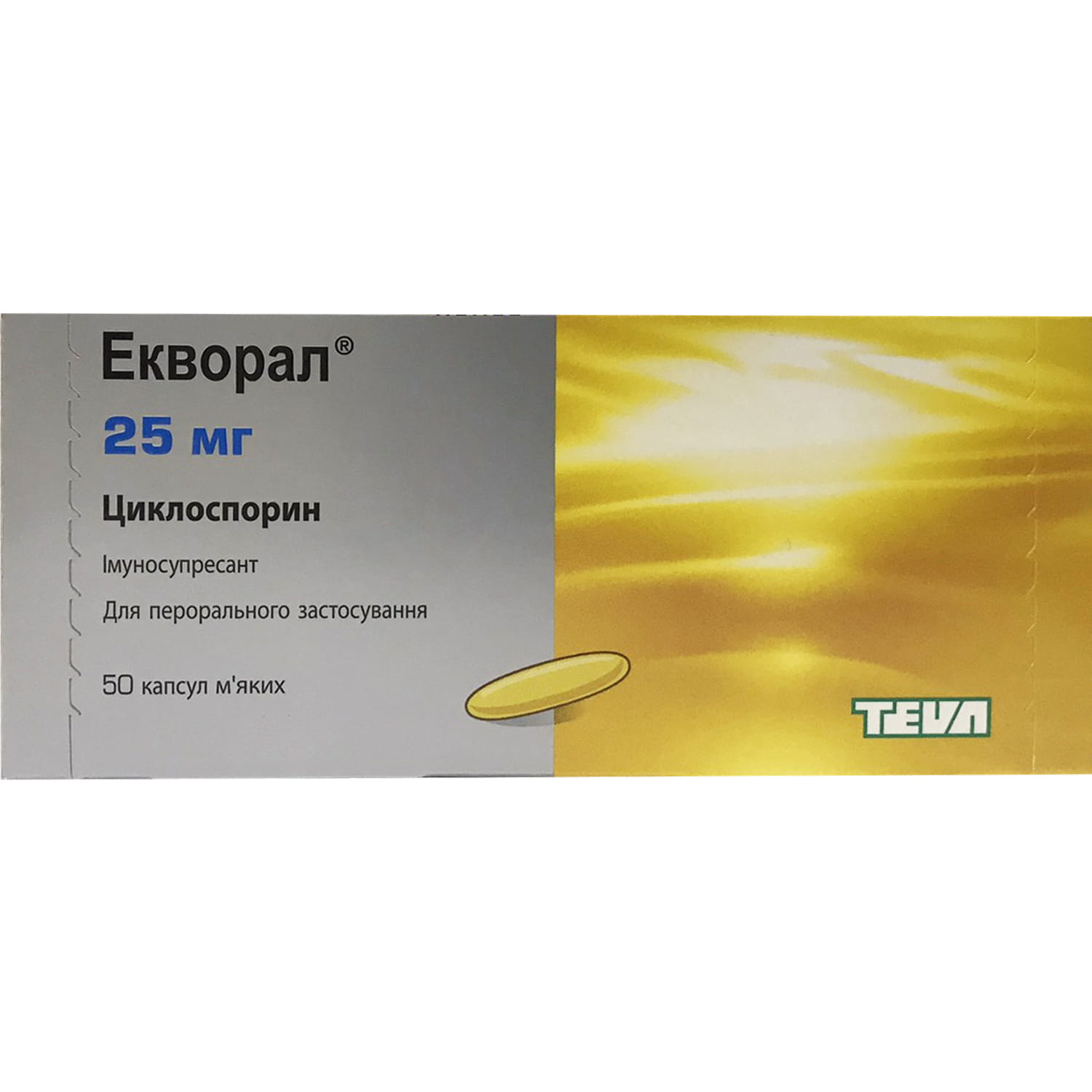
Pediatric Use
How does cyclosporine use differ in children? While cyclosporine is used in pediatric patients, particularly for organ transplantation, dosing and monitoring may need to be adjusted. Growth and development should be closely monitored in children receiving long-term cyclosporine therapy.
Geriatric Use
Are there special considerations for elderly patients taking cyclosporine? Older adults may be more sensitive to the effects of cyclosporine and may require dose adjustments. They may also be at higher risk for certain side effects, such as kidney problems and hypertension. Close monitoring is essential in this population.
Patients with Liver or Kidney Impairment
How does liver or kidney function affect cyclosporine use? Patients with pre-existing liver or kidney issues may require dose adjustments and more frequent monitoring of organ function and cyclosporine levels. In some cases, alternative immunosuppressants may be considered.
These special considerations highlight the importance of individualized treatment plans and close medical supervision for patients taking cyclosporine. Healthcare providers must carefully weigh the benefits and risks for each patient, taking into account their specific health status and circumstances.

Side Effects, Dosage, Uses, and More
This drug has boxed warnings. A boxed warning is the most serious warning from the Food and Drug Administration (FDA). It alerts doctors and patients about drug effects that may be dangerous.
- Infection warning: Cyclosporine may increase your risk of serious infections. It may also increase your risk of developing a tumor or skin cancer.
- Skin disease warning: If you have psoriasis and have been treated with either psoralen plus ultraviolet A therapy, methotrexate, coal tar, radiation therapy, or ultraviolet light therapy, you may have a higher chance of developing a skin disease while taking cyclosporine capsules.
- High blood pressure and kidney disease warning: This medication may cause high blood pressure and kidney disease.
- Experienced physician warning: Only healthcare providers experienced in the management of systemic immunosuppressive therapy for the disease being treated should prescribe cyclosporine.
 “Systemic immunosuppressive therapy” is treatment for autoimmune diseases (in which a person’s immune system attacks their own body).
“Systemic immunosuppressive therapy” is treatment for autoimmune diseases (in which a person’s immune system attacks their own body). - Bioavailability warning: The absorption of Sandimmune (cyclosporine non-modified) capsules and oral solution during long-term use may become unpredictable. It’s recommended that people taking Sandimmune capsules or oral solution over a period of time be monitored for cyclosporine blood levels to avoid toxicity and possible organ rejection.
- Gengraf and Neoral warning: Gengraf and Neoral (cyclosporine modified) are absorbed more by the body compared with Sandimmune capsules and oral solution. So these drugs can’t be used interchangeably without the supervision of a healthcare provider.
- Cyclosporine oral capsule is available as a generic drug and as brand-name drugs. Brand names: Gengraf, Neoral, Sandimmune. Please note that Neoral and Gengraf (cyclosporine modified) aren’t absorbed in the same way as Sandimmune (cyclosporine non-modified) is, so these drugs can’t be used interchangeably.

- Cyclosporine comes as an oral capsule, an oral solution, eye drops, and an injectable form.
- Cyclosporine oral capsule is used to treat inflammation in rheumatoid arthritis and psoriasis. It’s also used to prevent the rejection of an organ transplant.
Cyclosporine is a prescription drug. It comes as an oral capsule, an oral solution, and eye drops. It also comes in an injectable form, which is only given by a healthcare provider.
Cyclosporine oral capsule is available as the brand-name drugs Gengraf, Neoral, and Sandimmune. It’s also available as a generic drug.
Generic drugs usually cost less than the brand-name version. In some cases, they may not be available in all strengths or forms as the brand-name drug.
Please note that Neoral and Gengraf can’t be used interchangeably with Sandimmune.
Why it’s used
Cyclosporine is used to prevent rejection of a transplanted organ. It’s also used to reduce inflammation in active rheumatoid arthritis (RA) and severe psoriasis.
The brand-name version called Sandimmune is only used to prevent rejection of a transplanted organ.
How it works
Cyclosporine belongs to a class of drugs called immunosuppressants. A class of drugs is a group of medications that work in a similar way. These drugs are often used to treat similar conditions.
Cyclosporine works by weakening your immune system. White blood cells, part of your immune system, normally fight substances in your body that aren’t there naturally, such as a transplanted organ. Cyclosporine stops white blood cells from attacking a transplanted organ.
In the case of RA or psoriasis, cyclosporine stops your immune system from mistakenly attacking your own body tissues.
Cyclosporine can cause mild or serious side effects. The following list contains some of the key side effects that may occur while taking cyclosporine.
This list doesn’t include all possible side effects. For more information on the possible side effects of cyclosporine, or tips on how to deal with a troubling side effect, talk with your doctor or pharmacist.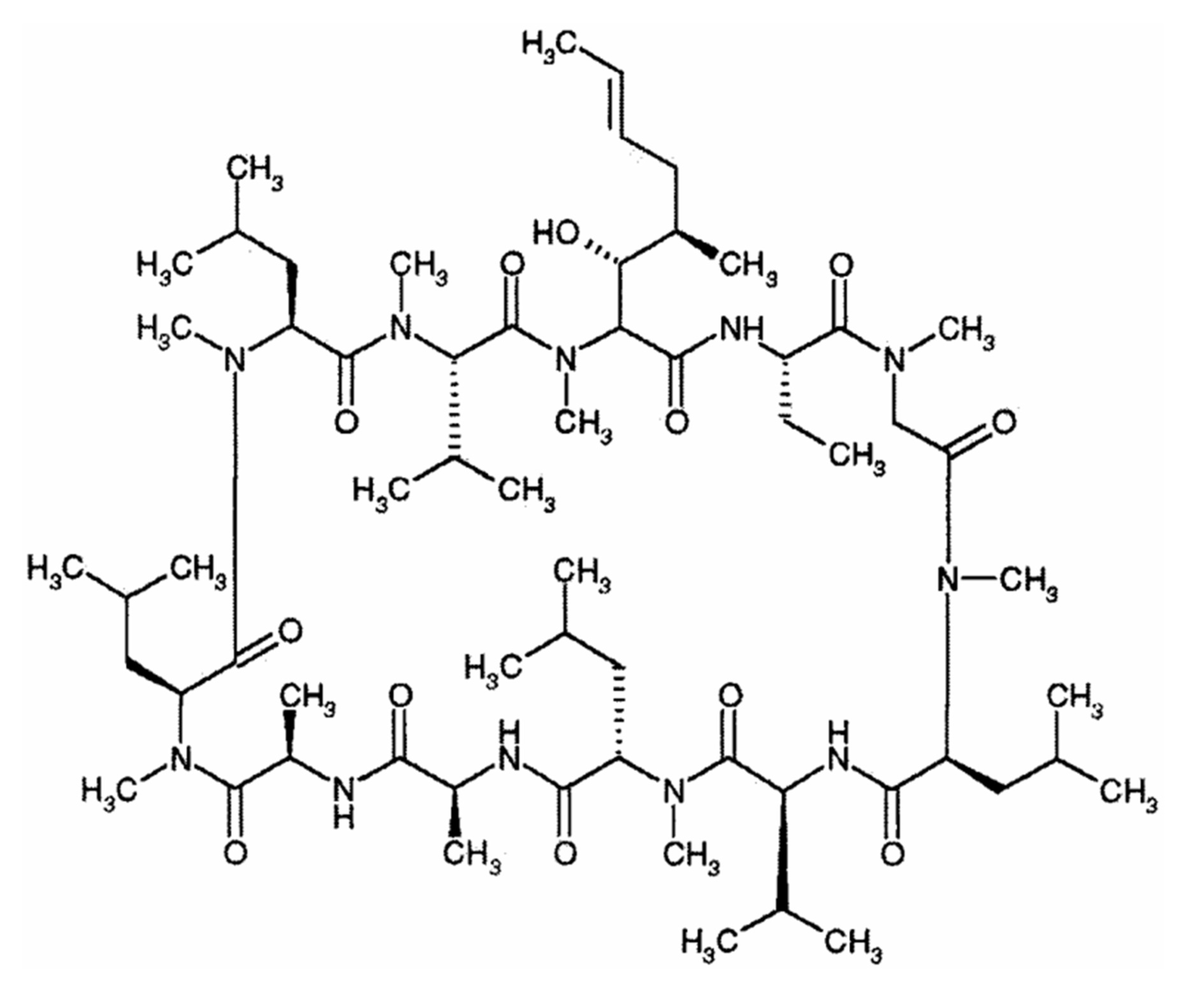
Cyclosporine oral capsule doesn’t cause drowsiness.
More common side effects
The more common side effects that occur with cyclosporine include:
- high blood pressure
- low magnesium levels in your body
- blood clots in your kidneys
- stomach pain
- hair growth in certain areas
- acne
- tremors
- headache
- increased size of your gums
If these effects are mild, they may go away within a few days or a couple of weeks. If they’re more severe or don’t go away, talk to your doctor or pharmacist.
Serious side effects
Call your doctor right away if you have serious side effects. Call 911 if your symptoms feel life threatening or if you think you’re having a medical emergency. Serious side effects and their symptoms can include the following:
Liver damage. Symptoms may include:
- blood in urine
- dark urine
- pale stools
- yellowing of your skin or the whites of your eyes
- pain in your upper abdomen
Kidney damage.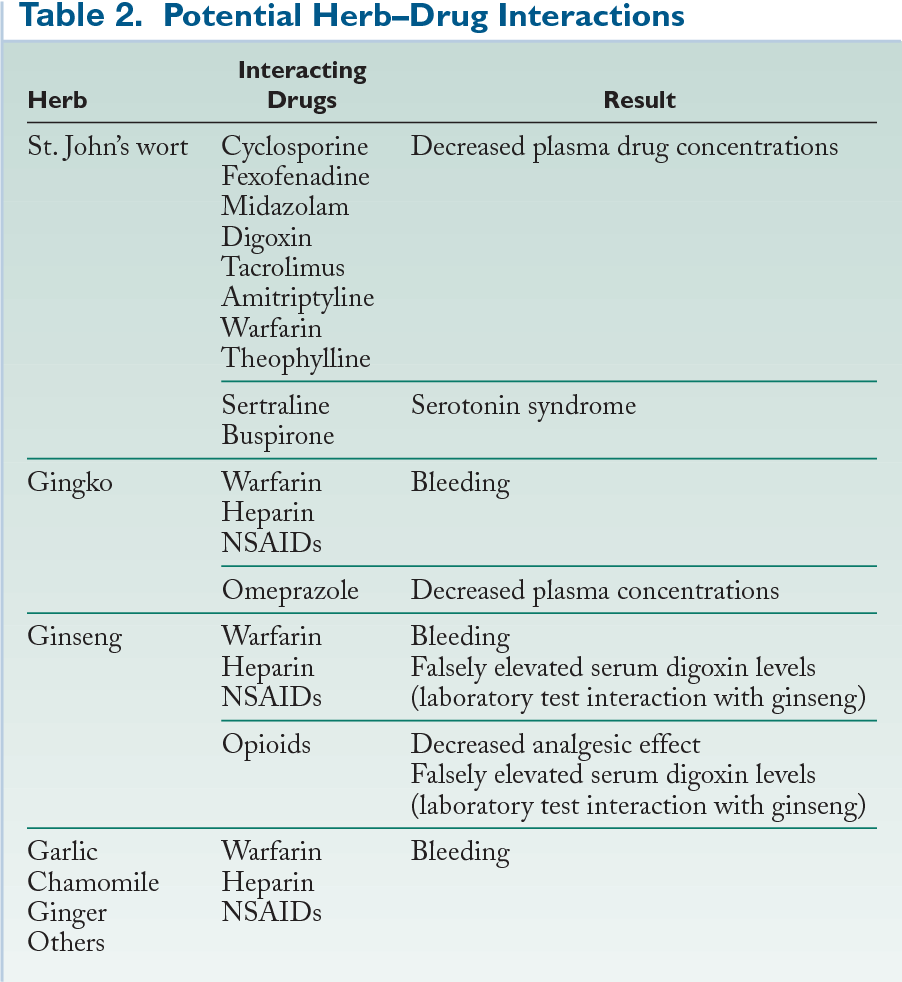 Symptoms may include:
Symptoms may include:
- blood in urine
Heart problems. Symptoms may include:
- swelling of your feet or lower legs
Lung problems. Symptoms may include:
- trouble breathing
The cyclosporine dosage your doctor prescribes will depend on several factors. These include:
- the type and severity of the condition you’re using cyclosporine to treat
- your age
- the form of cyclosporine you take
- other medical conditions you may have
Typically, your doctor will start you on a low dosage and adjust it over time to reach the dosage that’s right for you. They’ll ultimately prescribe the smallest dosage that provides the desired effect.
The following information describes dosages that are commonly used or recommended. However, be sure to take the dosage your doctor prescribes for you. Your doctor will determine the best dosage to suit your needs.
All possible dosages and forms may not be included here.
Dosage for rheumatoid arthritis
Generic: Cyclosporine
- Form: oral capsule
- Strengths: 25 milligrams (mg), 50 mg, and 100 mg
Brand: Gengraf
- Form: oral capsule
- Strengths: 25 mg and 100 mg
Brand: Neoral
- Form: oral capsule
- Strengths: 25 mg and 100 mg
Adult dosage (ages 18 years and older)
Dosage is based on weight.
- Typical starting dosage: 2.5 milligrams per kilogram (mg/kg) per day, divided into two doses (1.25 mg/kg per dose).
- Maximum dosage: 4 mg/kg per day.
- Note: If you don’t have good results after 16 weeks of treatment, your doctor will have you stop taking cyclosporine.
Child dosage (ages 0–17 years)
Dosage hasn’t been established for people younger than 17 years old.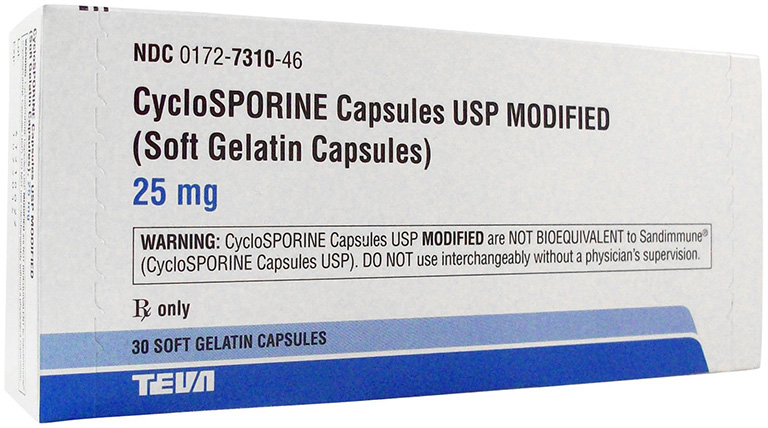
Dosage for psoriasis
Generic: Cyclosporine
- Form: oral capsule
- Strengths: 25 mg, 50 mg, and 100 mg
Brand: Gengraf
- Form: oral capsule
- Strengths: 25 mg and 100 mg
Brand: Neoral
- Form: oral capsule
- Strengths: 25 mg and 100 mg
Adult dosage (ages 18 years and older)
Dosage is based on weight.
- Typical starting dosage: 2.5 mg/kg per day, divided into two doses (1.25 mg/kg per dose).
- Maximum dosage: 4 mg/kg per day.
- Note: If you don’t have good results after 6 weeks at the maximum tolerated dose, your doctor will have you stop taking cyclosporine.
Child dosage (ages 0–17 years)
Dosage hasn’t been established for people younger than 17 years old.
Dosage to prevent rejection of kidney, liver, and heart transplants
Generic: Cyclosporine
- Form: oral capsule
- Strengths: 25 mg, 50 mg, and 100 mg
Brand: Gengraf
- Form: oral capsule
- Strengths: 25 mg and 100 mg
Brand: Neoral
- Form: oral capsule
- Strengths: 25 mg and 100 mg
Brand: Sandimmune
- Form: oral capsule
- Strengths: 25 mg and 100 mg
Adult dosage (ages 18 years and older)
The dosage of cyclosporine may vary, depending on your body weight, the organ that has been transplanted, and other medications you’re taking.
- Neoral, Gengraf, and generics: Dosage may vary. The typical daily dosage is 7–9 milligrams per kilogram (mg/kg) of body weight taken in two even doses spaced evenly throughout the day.

- Sandimmune and generic:
- Take your first dose 4–12 hours before your transplant. This dose is typically 15 mg/kg. Your doctor may give you a dosage that’s 10–14 mg/kg per day.
- Continue taking the same dosage after your transplant surgery for 1–2 weeks. After that, reduce it by 5 percent per week to a maintenance dosage of 5–10 mg/kg per day.
Child dosage (ages 1–17 years)
The dosage of cyclosporine will vary depending on your child’s body weight, the organ that has been transplanted, and other medications your child is taking.
- Neoral, Gengraf, and generics: Dosage may vary. The typical initial daily dosage is 7–9 milligram per kilogram (mg/kg) of body weight divided in two equal daily doses.
- Sandimmune and generic:
- Take your first dose 4–12 hours before your transplant. This dose is typically 15 mg/kg. Your doctor may give you a dosage that’s 10–14 mg/kg per day.

- Continue taking the same dosage after your transplant surgery for 1–2 weeks. After that, reduce it by 5 percent per week to a maintenance dosage of 5–10 mg/kg per day.
- Take your first dose 4–12 hours before your transplant. This dose is typically 15 mg/kg. Your doctor may give you a dosage that’s 10–14 mg/kg per day.
Child dosage (ages 0–11 months)
Dosage hasn’t been established for children younger than 12 months.
Special dosage considerations
- For people with kidney disorders: Cyclosporine may cause kidney disease. If you already have kidney problems, your doctor may prescribe a reduced dosage of cyclosporine.
- For people with liver disorders: Cyclosporine may cause liver disease. If you already have liver problems, your doctor may prescribe a reduced dosage of cyclosporine.
Cyclosporine is used for long-term treatment. It comes with serious risks if you don’t take it as prescribed.
If you stop taking the drug or don’t take it at all: Your body may reject your transplanted organ or your symptoms of RA or psoriasis may return.
If you miss doses or don’t take it on schedule: Your body may reject your transplant, causing serious health problems. Or your symptoms of RA or psoriasis may return.
If you take too much: You could have dangerous levels of the drug in your body. Symptoms of an overdose of this drug can include:
- yellowing of your skin or the whites of your eyes
- swelling of your arms, hands, feet, ankles, or lower legs
If you think you’ve taken too much of this drug, call your doctor or seek guidance from the American Association of Poison Control Centers at 800-222-1222 or through their online tool. But if your symptoms are severe, call 911 or go to the nearest emergency room right away.
What to do if you miss a dose: If you miss a dose, take it as soon as you can. However, if it’s just a few hours until your next dose, skip the missed dose.
Don’t try to catch up by taking two doses at once. This could result in dangerous side effects.
This could result in dangerous side effects.
How to tell if the drug is working: You may be able to tell the drug is working if:
- your body doesn’t reject the transplanted organ or tissue
- you have fewer RA symptoms
- you have fewer psoriasis plaques
This drug comes with various warnings.
FDA warnings
- This drug has black box warnings. A black box warning is the most serious warning from the Food and Drug Administration (FDA). A black box warning alerts doctors and patients about drug effects that may be dangerous.
- Infection warning. Cyclosporine may increase your risk of serious infections. It may also increase your risk of developing a tumor or skin cancer.
- Skin disease warning. If you have psoriasis and have been treated with either psoralen plus ultraviolet A therapy, methotrexate, coal tar, radiation therapy, or ultraviolet light therapy, you may have a higher chance of developing a skin disease while taking cyclosporine capsules.

- High blood pressure and kidney disease warning. This medication may cause high blood pressure and kidney disease.
- Experienced physician warning. Only healthcare providers experienced in the management of systemic immunosuppressive therapy for the indicated disease should prescribe cyclosporine. “Systemic immunosuppressive therapy” is treatment for autoimmune diseases (in which a person’s immune system attacks their own body).
- Bioavailability warning. The absorption of Sandimmune (cyclosporine non-modified) capsules and oral solution during long-term usage may become unpredictable. It’s recommended that people taking Sandimmune capsules or oral solution over a period of time be monitored for cyclosporine blood levels to avoid toxicity and possible organ rejection.
- Gengraf and Neoral warning. Gengraf and Neoral (cyclosporine modified) are absorbed more by the body compared with Sandimmune capsules and oral solution.
 So these drugs can’t be used interchangeably without the supervision of a healthcare provider.
So these drugs can’t be used interchangeably without the supervision of a healthcare provider.
Was this helpful?
Liver damage warning
Taking cyclosporine may cause liver damage and liver failure, especially if you take high doses. It may even be fatal.
High potassium levels warning
Taking this drug may raise your potassium levels.
Food interactions warning
Avoid eating grapefruit or drinking grapefruit juice when taking this medication. Consuming grapefruit products can increase the amount of cyclosporine in your body.
Warnings for people with certain health conditions
For people with kidney and liver disorders: Cyclosporine may cause kidney and liver disease. If you already have kidney or liver problems, high doses of cyclosporine may make it worse.
For people with serious infections: Cyclosporine may increase your risk of serious viral infections, such as polyomavirus infection. This may be very serious, even fatal.
This may be very serious, even fatal.
Warnings for other groups
For pregnant women: Cyclosporine is a category C pregnancy drug. That means two things:
- Research in animals has shown adverse effects to the fetus when the mother takes the drug.
- There haven’t been enough studies done in humans to be certain how the drug might affect the fetus.
Talk with your doctor if you’re pregnant or plan to become pregnant. Cyclosporine should be used during pregnancy only if the potential benefit justifies the potential risk to the fetus.
For women who are breastfeeding: Cyclosporine passes through breast milk and may cause serious negative effects. Tell your doctor if you’re breastfeeding. You and your doctor need to decide if you’ll breastfeed or take cyclosporine.
Brand-name Sandimmune capsules contain ethanol (alcohol). Ethanol and other substances in the drug may pass through breast milk and cause serious effects in a child who is breastfed.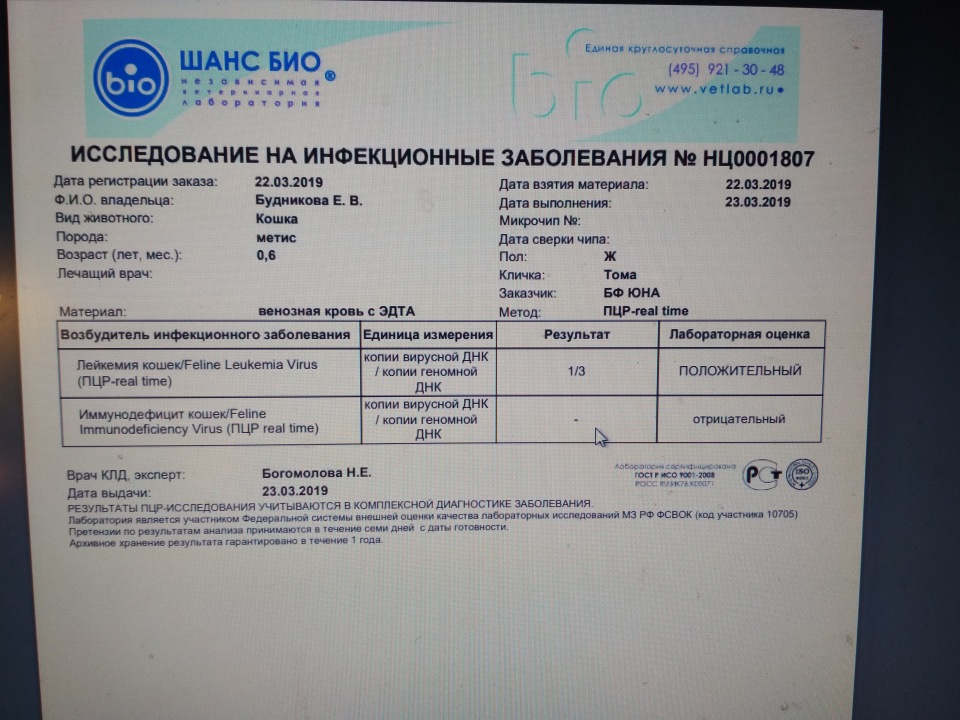
For seniors: If you’re 65 years or older, you’re more likely to develop high blood pressure if you use cyclosporine. As you age, your organs, such as your liver and kidneys, don’t work as well as they once did. To prevent kidney damage, your doctor may start you on a lower dose.
For children:
- Who have had a kidney, liver, or heart transplant: Children ages 6 months and older who received certain organ transplants and were treated with cyclosporine didn’t have unusual side effects.
- Who have rheumatoid arthritis or psoriasis: This drug hasn’t been established as safe or effective for use in people younger than 18 years who have rheumatoid arthritis or psoriasis.
Cyclosporine can interact with several other medications. Different interactions can cause different effects. For instance, some can interfere with how well a drug works, while others can cause increased side effects.
Below is a list of medications that can interact with cyclosporine. This list doesn’t contain all drugs that may interact with cyclosporine.
This list doesn’t contain all drugs that may interact with cyclosporine.
Before taking cyclosporine, be sure to tell your doctor and pharmacist about all prescription, over-the-counter, and other drugs you take. Also tell them about any vitamins, herbs, and supplements you use. Sharing this information can help you avoid potential interactions.
If you have questions about drug interactions that may affect you, ask your doctor or pharmacist.
Antibiotics
Taking cyclosporine with certain antibiotics may lead to an increased risk of kidney damage. Examples of these drugs include:
- ciprofloxacin
- gentamicin
- tobramycin
- trimethoprim/sulfamethoxazole
- vancomycin
The following antibiotics may lead to higher levels of cyclosporine in your body. This may increase your risk of side effects. Examples of these drugs include:
- azithromycin
- clarithromycin
- erythromycin
- quinupristin/dalfopristin
The following antibiotics may decrease the amount of cyclosporine in your body. This may cause cyclosporine not to work as well as it should. When cyclosporine is used to prevent organ rejection, this could lead to rejection of a transplanted organ. These drugs include:
This may cause cyclosporine not to work as well as it should. When cyclosporine is used to prevent organ rejection, this could lead to rejection of a transplanted organ. These drugs include:
- nafcillin
- rifampin
Nonsteroidal anti-inflammatory drugs (NSAIDs)
Taking cyclosporine with these drugs may increase your risk of kidney damage. Examples of these drugs include:
- ibuprofen
- sulindac
- naproxen
- diclofenac
Antifungals
Taking cyclosporine with certain antifungal drugs may lead to higher levels of cyclosporine in your body. This could cause increased side effects or raise your risk of kidney damage. Examples of these drugs include:
- amphotericin B
- ketoconazole
- fluconazole
- itraconazole
- voriconazole
Terbinafine, another antifungal, may decrease the amount of cyclosporine in your body. This may cause cyclosporine not to work as well as it should.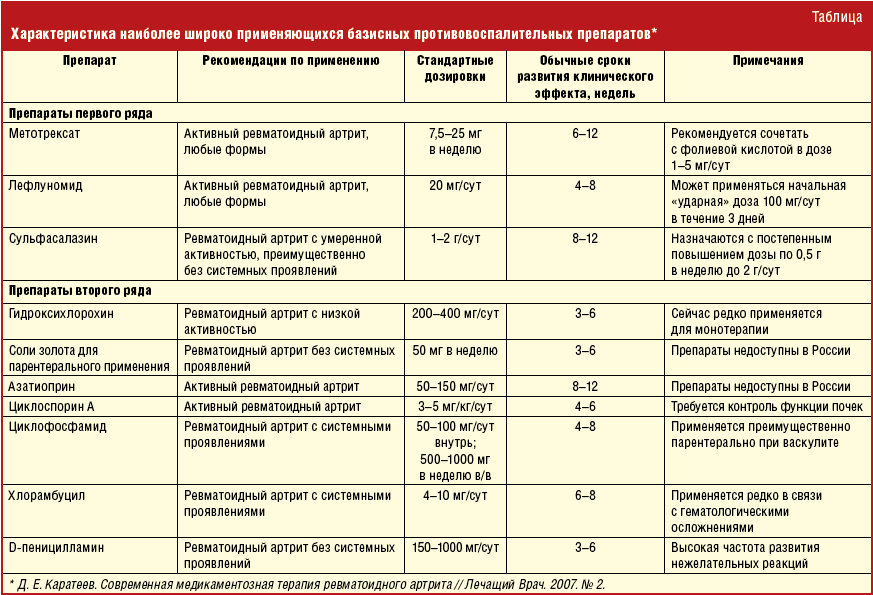 When cyclosporine is used to prevent transplant rejection, this could lead to rejection of a transplanted organ.
When cyclosporine is used to prevent transplant rejection, this could lead to rejection of a transplanted organ.
Acid reflux drugs
Taking cyclosporine with these drugs may increase your risk of kidney damage. Examples of these drugs include:
- cimetidine
Birth control drugs
Taking cyclosporine with drugs used for birth control may increase the amount of cyclosporine in your body. This may cause harmful side effects.
Immunity-suppressing drug
Taking tacrolimus with cyclosporine can increase your risk of kidney damage.
High cholesterol drugs
Taking cyclosporine with the following cholesterol drugs may increase your risk of kidney damage:
- fenofibrate
- gemfibrozil
When you take cyclosporine with other cholesterol drugs, the concentration of these drugs in your body may increase. This may cause side effects such as muscle pain and weakness. These drugs include:
- atorvastatin
- simvastatin
- lovastatin
- pravastatin
- fluvastatin
Blood pressure drugs
Taking these drugs with cyclosporine may increase the amount of cyclosporine in your body. This may cause harmful side effects. Examples of these drugs include:
This may cause harmful side effects. Examples of these drugs include:
- diltiazem
- nicardipine
- verapamil
Corticosteroid
Taking methylprednisolone with cyclosporine may increase the amount of cyclosporine in your body. This may cause harmful side effects.
Anticonvulsants
Taking these drugs with cyclosporine may decrease the amount of cyclosporine in your body. This may cause cyclosporine not to work as well as it should. When cyclosporine is used to prevent organ rejection, this could lead to rejection of a transplanted organ. Examples of these drugs include:
- carbamazepine
- oxcarbazepine
- phenobarbital
- phenytoin
Herb
Taking St. John’s wort with cyclosporine may decrease the amount of cyclosporine in your body. This may cause cyclosporine not to work as well as it should. When cyclosporine is being used to prevent organ rejection, this could lead to rejection of a transplanted organ.
Gout drugs
Taking allopurinol with cyclosporine can increase the amount of cyclosporine in your body. This may increase your risk of side effects.
Taking colchicine with cyclosporine may increase your risk of kidney damage.
HIV drugs
If you’re taking drugs called protease inhibitors to treat HIV, check with your doctor before taking cyclosporine. Your doctor may need to reduce your dose of cyclosporine to prevent side effects that can be caused by taking these drugs with cyclosporine. Examples of these drugs include:
- indinavir
- nelfinavir
- ritonavir
- saquinavir
Fluid-reducing drugs
Don’t take cyclosporine with these drugs. It may increase the amount of potassium in your body and may cause harmful side effects. These side effects may include a slow heart rate, fatigue, muscle weakness, and nausea. Examples of these drugs include:
- triamterene
- amiloride
Cancer drugs
Taking cyclosporine with certain drugs used to treat cancer may increase the amounts of those medications in your body. This may increase your risk of side effects. Examples of these drugs include:
This may increase your risk of side effects. Examples of these drugs include:
- daunorubicin
- doxorubicin
- etoposide
- mitoxantrone
Taking melphalan, another cancer drug, with cyclosporine may increase your risk of kidney damage.
Other drugs
Taking cyclosporine with any of the medications listed below may cause increased amounts of those medications in your body. This may increase your risk of side effects. Examples of these drugs include:
- ambrisentan
- aliskiren
- bosentan
- dabigatran
- digoxin
- prednisolone
- repaglinide
- sirolimus
Other drugs may increase the amount of cyclosporine in your body. This may cause harmful side effects. Examples of these drugs include:
- amiodarone
- bromocriptine
- danazol
- imatinib
- metoclopramide
- nefazodone
Other drugs may decrease the amount of cyclosporine in your body. This may cause cyclosporine not to work as well as it should. When cyclosporine is used to prevent organ rejection, this could lead to rejection of a transplanted organ. Examples of these drugs include:
This may cause cyclosporine not to work as well as it should. When cyclosporine is used to prevent organ rejection, this could lead to rejection of a transplanted organ. Examples of these drugs include:
- bosentan
- octreotide
- orlistat
- sulfinpyrazone
- ticlopidine
Keep these considerations in mind if your doctor prescribes cyclosporine for you.
General
- Take cyclosporine at the same time every day.
- Don’t crush, chew, or cut cyclosporine capsules.
- Note that you may detect an odor when you open the container for the first time. This will disappear over time.
Storage
- Store at room temperature between 68°F and 77°F (20°C and 25°C).
- Keep this drug away from light and high temperature.
- Don’t store this medication in moist or damp areas, such as bathrooms.
Refills
A prescription for this medication is refillable. You shouldn’t need a new prescription for this medication to be refilled. Your doctor will write the number of refills authorized on your prescription.
Your doctor will write the number of refills authorized on your prescription.
Travel
When traveling with your medication:
- Always carry your medication with you. When flying, never put it into a checked bag. Keep it in your carry-on bag.
- Don’t worry about airport X-ray machines. They can’t hurt your medication.
- You may need to show airport staff the pharmacy label for your medication. Always carry the original prescription-labeled container with you.
- Don’t put this medication in your car’s glove compartment or leave it in the car. Be sure to avoid doing this when the weather is very hot or very cold.
- Talk to your pharmacist before you travel to be sure you have enough of this medication. Depending on where you travel, you may have trouble getting this drug.
Self-management
If you’re taking generic cyclosporine or a brand-name drug other than Sandimmune, avoid excessive sunlight or tanning booths.
Clinical monitoring
Your doctor may monitor you with certain blood tests before and during treatment with cyclosporine.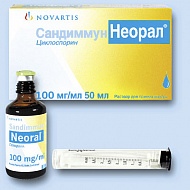 This is to make sure it’s safe for you to take. Tests may be done to check things such as your:
This is to make sure it’s safe for you to take. Tests may be done to check things such as your:
- cyclosporine levels
- liver function
- kidney function
- cholesterol levels
- magnesium level
- potassium level
Availability
Not every pharmacy stocks this drug. When filling your prescription, be sure to call ahead to make sure your pharmacy carries it.
Prior authorization
Many insurance companies require a prior authorization for this drug. This means your doctor will need to get approval from your insurance company before your insurance company will pay for the prescription.
There are other drugs available to treat your condition. Some may be better suited for you than others. Talk to your doctor about other drug options that may work for you.
Disclaimer: Healthline has made every effort to make certain that all information is factually correct, comprehensive, and up to date. However, this article should not be used as a substitute for the knowledge and expertise of a licensed healthcare professional. You should always consult your doctor or other healthcare professional before taking any medication. The drug information contained herein is subject to change and is not intended to cover all possible uses, directions, precautions, warnings, drug interactions, allergic reactions, or adverse effects. The absence of warnings or other information for a given drug does not indicate that the drug or drug combination is safe, effective, or appropriate for all patients or all specific uses.
You should always consult your doctor or other healthcare professional before taking any medication. The drug information contained herein is subject to change and is not intended to cover all possible uses, directions, precautions, warnings, drug interactions, allergic reactions, or adverse effects. The absence of warnings or other information for a given drug does not indicate that the drug or drug combination is safe, effective, or appropriate for all patients or all specific uses.
Uses, dosage, side effects, warnings, and interactions
In April 2020, the Food and Drug Administration (FDA) requested that all forms of prescription and over-the-counter (OTC) ranitidine (Zantac) be removed from the U.S. market. They made this recommendation because unacceptable levels of NDMA, a probable carcinogen (or cancer-causing chemical), were present in some ranitidine products. People taking prescription ranitidine should talk with their doctor about safe alternative options before stopping the drug. People taking OTC ranitidine should stop taking the drug and talk with their healthcare provider about alternative options. Instead of taking unused ranitidine products to a drug take-back site, a person should dispose of them according to the product’s instructions or by following the FDA’s guidance.
People taking OTC ranitidine should stop taking the drug and talk with their healthcare provider about alternative options. Instead of taking unused ranitidine products to a drug take-back site, a person should dispose of them according to the product’s instructions or by following the FDA’s guidance.
Cyclosporine is a drug that suppresses immune system function. Doctors prescribe it to treat autoimmune conditions, including rheumatoid arthritis and psoriasis, and prevent organ rejection after a transplant.
Cyclosporine is an alternative treatment for autoimmune conditions such as rheumatoid arthritis (RA) and psoriasis. Doctors tend to prescribe it when first-line treatments have been ineffective.
Although usually effective, cyclosporine can cause various side effects. People can work with their doctor to determine whether or not this medication is the right treatment option for them.
In this article, learn more about cyclosporine, including its uses, dosage recommendations, side effects, warnings, and potential interactions with other drugs.
Cyclosporine is a prescription medication that doctors often use to treat autoimmune conditions such as RA and psoriasis. It comes in many forms, including oral capsules, an oral solution, and eye drops.
Doctors also use cyclosporine to help prevent the body from rejecting an organ after a solid organ transplant.
Autoimmune conditions develop when the immune system mistakenly attacks healthy cells. Cyclosporine works by suppressing the immune system’s responses. By reducing the immune response, the drug prevents the immune system from attacking healthy tissues. In the same way, it prevents the body from treating a transplanted organ as foreign matter.
Brand name versions of cyclosporine include:
- Gengraf
- Neural
- Sandimmune
The immune system’s function is to fight off disease. Drugs that suppress the immune system, called immunosuppressive drugs, can make people more likely to contract infections.
Cyclosporine inhibits immune system function. Specifically, it temporarily reduces the activity of cells in the immune system called lymphocytes, such as T helper cells and T suppressor cells.
Specifically, it temporarily reduces the activity of cells in the immune system called lymphocytes, such as T helper cells and T suppressor cells.
Cyclosporine also reduces how much enzyme interleukin-2 (IL-2) the body produces. IL-2 regulates white blood cell activity. Suppressing IL-2 can reduce the body’s immune response, which reduces the symptoms of autoimmune conditions.
Cyclosporine comes in various forms and dosages. People should work with their doctor to determine the best treatment option for their specific needs.
Cyclosporine is available in original or modified forms that improve how well the body absorbs the medication. As with all medications, people should take this medication in accordance with their doctor’s instructions.
People can take cyclosporine capsules (modified) or cyclosporine oral solution (modified) daily to help treat RA and psoriasis. The initial dosage is 2.5 milligrams per kilogram (mg/kg) of body weight per day, divided into two dosages. A doctor might increase this over time if necessary, up to a maximum of 4 mg/kg per day.
A doctor might increase this over time if necessary, up to a maximum of 4 mg/kg per day.
The initial dosage of cyclosporine for an organ transplant depends on the organ and any other medications a person is taking. People tend to continue taking cyclosporine for several weeks after the transplant.
Those with existing conditions that affect their kidneys or liver can take smaller dosages of cyclosporine. This is because this medication can cause or worsen kidney and liver issues.
Individuals who take two dosages daily should try to stick to a regular schedule. If they miss a dosage, they should take it as soon as they remember. It is important not to double up on dosages to make up for a missed one. This is because taking too much cyclosporine can result in adverse side effects.
Doctors may adjust the dosage for people with medical conditions that affect how well the body absorbs cyclosporine. These conditions can include low cholesterol or low magnesium levels.
Cyclosporine can cause a variety of side effects, such as:
- high blood pressure
- headache
- decreased kidney function
- excess hair growth in certain areas
- skin sensitivity
- stomach pain
- acne
- increased gum size
- fatigue
- muscle, bone, or joint pain
Symptoms of a cyclosporine overdose include:
- vomiting
- fatigue
- rapid heart rate, or tachycardia
- jaundice, a yellowing of the skin and whites of the eyes that may indicate liver damage
- kidney damage
- swelling of the arms, hands, legs, feet, or ankles
People who think they may have taken too much cyclosporine or are experiencing symptoms of an overdose should seek immediate medical attention or call Poison Control on 1-800-222-1222.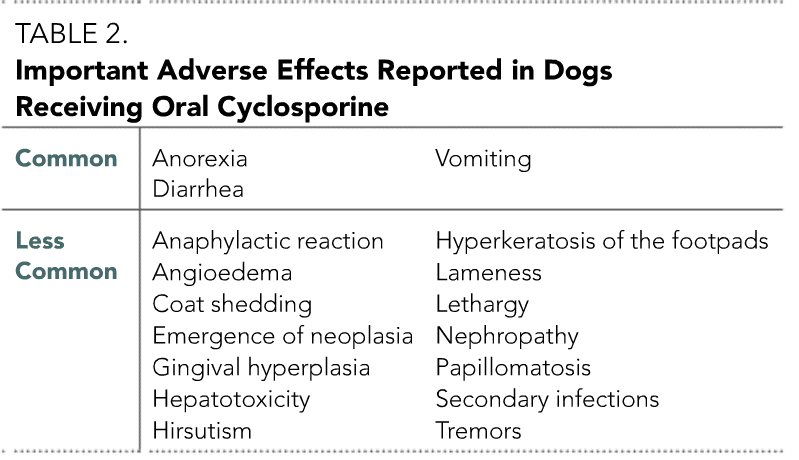
Although cyclosporine is a Food and Drug Administration (FDA)-approved drug, in some cases, it can cause severe side effects.
The National Psoriasis Foundation recommends that people avoid taking cyclosporine if they have:
- a weakened immune system
- decreased kidney function
- high blood pressure
- cancer or a history of this disease
- gout
As above, cyclosporine reduces the immune system’s function. This can increase a person’s risk of developing severe infections.
High dosages of cyclosporine can cause liver and kidney toxicity. It can also increase someone’s risk of certain types of cancer, especially lymphoma and skin cancer.
People who take immunosuppressants may have a higher risk of opportunistic infections, such as polyoma viral infections, which can have serious and sometimes fatal outcomes.
Additionally, the oral solution of cyclosporine contains a small amount of alcohol, which can negatively affect certain people.
Those who should not take the oral cyclosporine solution include children, pregnant people, breastfeeding individuals, and those who have liver disease or epilepsy.
Cyclosporine can also reduce the effectiveness of vaccines. For this reason, people may wish to consult their doctor if they plan on getting a vaccination at the same time as taking this medication.
The National Psoriasis Foundation also warns against the use of cyclosporine in people currently undergoing radiation treatment.
Cyclosporine can affect kidney function when a person takes it alongside the following drugs:
- antibiotics, such as gentamicin, tobramycin, and ciprofloxacin
- antineoplastics, such as melphalan
- antifungals, such as amphotericin B and ketoconazole
- anti-inflammatory drugs, such as colchicine and diclofenac
- gastrointestinal medications, such as cimetidine
- immunosuppressives, such as tacrolimus and methotrexate
The following medications can increase cyclosporine concentrations in the blood:
- calcium channel blockers, such as diltiazem, nicardipine, and verapamil
- antifungals, such as fluconazole, ketoconazole, and voriconazole
- antibiotics, such as clarithromycin, erythromycin, and azithromycin
- glucocorticoids, such as methylprednisolone
- oral contraceptives
People should inform their doctor if they are currently taking any medications that might interact with cyclosporine.
They should also consult their doctor or another healthcare professional before taking any natural supplements, especially St. John’s wort.
Although cyclosporine can help relieve the symptoms of arthritis, methotrexate remains the first-line treatment for RA. However, both treatments offer substantial benefits and side effects.
For example, methotrexate can cause skin reactions in people who spend a lot of time in the sun. It may also lead to congenital disabilities if individuals take it just before or during pregnancy.
Neoral, a form of cyclosporine, does not affect blood sugar levels. However, public health authorities do not yet consider it safe for use during pregnancy.
That said, the FDA advises that pregnant people can take this medication if the potential benefit justifies the potential risk to the fetus.
Neoral can also cause high blood pressure and kidney damage. People taking Neoral and other forms of cyclosporine may also need blood pressure medications.
Cyclosporine can help treat autoimmune conditions such as RA and psoriasis. It can also help prevent rejection after solid organ transplants.
Cyclosporine suppresses the immune system, which can increase people’s risk of infections.
It is best to discuss the costs and benefits of cyclosporine treatment with a doctor before starting the medication.
Cyclosporine is an important drug in veterinary practice
Author: Ruppel VV, PhD, veterinary dermatologist. Veterinary Clinic of Neurology, Traumatology and Intensive Care, St. Petersburg.
Today every veterinary dermatologist is aware of the drug cyclosporine and has his own experience with its use. It is obvious that many patients have received relief and complete healing from ailments thanks to cyclosporine. What is this remedy? Who is its developer? How does it work? Where to apply it? Are there side effects and what are they? We will try to answer some of these questions in this short article.
Cyclosporine is a fat-soluble cyclic metabolite of the fungus Tolypocladium inflatum gams, consisting of 11 amino acids. Initially, the drug was developed by Novartis International AG (the world’s second largest transnational pharmaceutical corporation) based on vegetable oil. However, this dosage form had low bioavailability, so its use in the treatment of dogs and cats was not recommended. Subsequently, the drug was modified (ultramicronized), as a result of which its bioavailability became satisfactory. Today, for use in veterinary medicine, the drug “Atopica” (Atopica) is used. It is available in capsules containing 10, 25, 50 and 100 mg of cyclosporine. Obviously, the drug got its name by analogy with the main disease for the treatment of which it is used – atopic dermatitis. However, the scope of the drug is not limited to this problem.
Initially, the drug was developed by Novartis International AG (the world’s second largest transnational pharmaceutical corporation) based on vegetable oil. However, this dosage form had low bioavailability, so its use in the treatment of dogs and cats was not recommended. Subsequently, the drug was modified (ultramicronized), as a result of which its bioavailability became satisfactory. Today, for use in veterinary medicine, the drug “Atopica” (Atopica) is used. It is available in capsules containing 10, 25, 50 and 100 mg of cyclosporine. Obviously, the drug got its name by analogy with the main disease for the treatment of which it is used – atopic dermatitis. However, the scope of the drug is not limited to this problem.
In T cells, activation of the T cell receptor increases the amount of intracellular calcium acting through calmodulin to activate calcineurin. After that, calcineurin dephosphorylates and acts on the nuclear factor of activated T-cells (NFAT), which, in turn, moves into the nucleus of T-cells and increases the activity of genes encoding IL-2 and other related him cytokines.
Cyclosporine blocks the functions of T cells. It binds to the cytoplasmic protein cyclophilin (the so-called immunophilin) of T-lymphocytes. This complex, cyclosporine-cyclophilin, inhibits calcineurin, thereby preventing its dephosphorylation and subsequent activation of NFAT, further penetration of NFAT into the cell nucleus, and gene transcription following this penetration. This leads to inhibition of the production of lymphokines, while there is no proper release of interleukins, as a result, the effector function of T cells is reduced. It is believed that the main effect of cyclosporine is the inhibition of the production of cytokines produced by activated T-lymphocytes, namely interleukin-2 (IL-2), interleukin-4 (IL-4) and tumor necrosis factor (tumor necrosis factor; TNF-alpha) .
There is no proper activation of not only helper and cytotoxic T-lymphocytes, as already noted, but also macrophages and monocytes.
A consequence of a decrease in the level of cytokine production is also a violation of the activation of various inflammatory cells.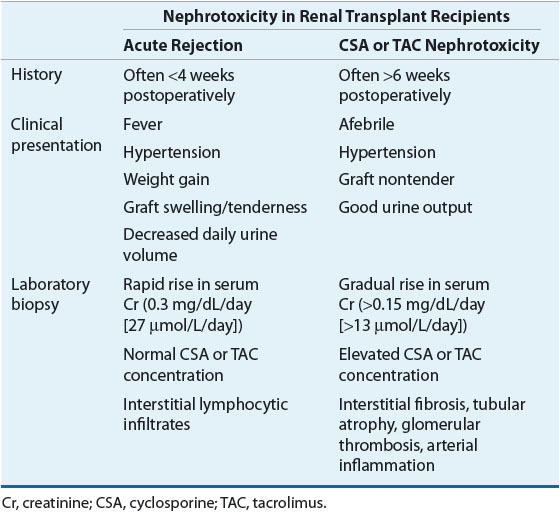 Inadequate proliferation of mast cells and eosinophils occurs, the period of their life is shortened, and the process of mast cell degranulation worsens. In addition, in patients taking cyclosporine, fewer Langerhans cells (antigen-presenting cells) are detected in the epidermis, in contrast to those patients who do not receive it. Consequently, the presentation of one or another antigen to T-lymphocytes becomes defective. Finally, cyclosporine alters the function of keratinocytes, resulting in decreased cytokine production by these epidermal cells1-5.
Inadequate proliferation of mast cells and eosinophils occurs, the period of their life is shortened, and the process of mast cell degranulation worsens. In addition, in patients taking cyclosporine, fewer Langerhans cells (antigen-presenting cells) are detected in the epidermis, in contrast to those patients who do not receive it. Consequently, the presentation of one or another antigen to T-lymphocytes becomes defective. Finally, cyclosporine alters the function of keratinocytes, resulting in decreased cytokine production by these epidermal cells1-5.
Scope of cyclosporine
The use of cyclosporine has been investigated for the treatment of atopic dermatitis (AD) in dogs. This drug turned out to be very effective, which is comparable to the effect of the use of glucocorticoids. In addition, unlike glucocorticoids, ciclosporin may not be discontinued until skin tests are performed in dogs with AD (as well as serological tests)6. Although ciclosporin is most commonly used in the treatment of AD in dogs, there are other conditions in which it can be very effective. So, for example, it was used in the treatment of adenitis of the sebaceous glands and perianal fistulas in German shepherds7-11. In the author’s practice, there is also a positive clinical experience with the use of cyclosporine in these conditions (the effect ranged from good to excellent).
So, for example, it was used in the treatment of adenitis of the sebaceous glands and perianal fistulas in German shepherds7-11. In the author’s practice, there is also a positive clinical experience with the use of cyclosporine in these conditions (the effect ranged from good to excellent).
Good clinical results have been reported with ciclosporin for the treatment of Persian cats suffering from idiopathic facial dermatitis12. The author has no experience with this drug in this disease.
The use of cyclosporine has also been described for idiopathic sterile panniculitis manifesting as fistulas (so-called metatarsal fistulas) located on the metatarsal pads in Weimaraners13. In the practice of our clinic, we have not encountered such a pathology in this breed of dogs, but we have come across several clinical cases in German shepherds. The effect obtained from the treatment was excellent, and maintenance therapy consisted of further use of cyclosporine every 48 hours (and less often) at a dose of 5 mg/kg (Fig. 1A, 1B, 1C).
1A, 1B, 1C).
Its use has also been described for the treatment of idiopathic sterile nodular panniculitis14, and it is also recommended for the treatment of sterile granuloma/pyogranuloma syndrome15. In our practice, there were no cases of treatment of idiopathic sterile nodular panniculitis with cyclosporine, but at the moment we are treating an eight-year-old Rottweiler admitted to the clinic due to sterile pyogranuloma syndrome, and the effect of the treatment is still satisfactory.
Fig. 1A. Before treatment.
Fig. 1B. 2 weeks after the start of treatment, there is a positive trend.
Fig. 1B. Complete remission is noted 6 weeks after the start of treatment. Maintenance therapy at a dose of 5 mg/kg in a dosing regimen every 72 hours ensured the absence of relapses. The patient has been under our observation for several months.
The author had the only experience with ciclosporin monotherapy in a cat with pemphigus foliaceus. This choice was due to the fact that the animal began to develop severe complications as a result of the use of glucocorticosteroids (GCS). The good result was more likely due to clinical luck than to any pattern, since the usual recommendation for cyclosporine is to prescribe it in conjunction with GCS (Fig. 2).
The good result was more likely due to clinical luck than to any pattern, since the usual recommendation for cyclosporine is to prescribe it in conjunction with GCS (Fig. 2).
Fig. Fig. 2. Efficacy of cyclosporine alone in pemphigus foliaceus in a cat (photo on the left – before therapy; photo on the right – after therapy).
We have also tried ciclosporin for the treatment of a dog with discoid lupus due to the ineffectiveness of topical tacrolimus. In this clinical case, an excellent result was obtained after the use of cyclosporine (Fig. 3). The induction dose was 7 mg/kg daily and maintenance therapy was 5 mg/kg every 72 hours. We made sure that remission with this regimen is not an accident, since an attempt to cancel the drug led to the development of a relapse.
Fig. Fig. 3. The effectiveness of cyclosporine in discoid lupus in a dog (A, B, C – before treatment; D, E, F – after treatment).
For atopic dermatitis, we have used cyclosporine in both dogs and cats. The initial oral dosage of ciclosporin was 5 mg/kg/day in dogs and 7 mg/kg/day in cats for allergic disease. The literature recommends giving the drug on an empty stomach, which suggests better bioavailability. According to our observation, the effectiveness of cyclosporine does not change if it is given after a meal.
The initial oral dosage of ciclosporin was 5 mg/kg/day in dogs and 7 mg/kg/day in cats for allergic disease. The literature recommends giving the drug on an empty stomach, which suggests better bioavailability. According to our observation, the effectiveness of cyclosporine does not change if it is given after a meal.
It should be noted that severe clinical manifestations such as pododermatitis, chronic proliferative otitis media, and acral granulomas can occur in atopic dermatitis. Cyclosporine is the drug of choice for the treatment of these clinical conditions associated with this problem and accompanied by proliferative changes. A good effect, presumably, is due to the fact that cyclosporine prevents cell infiltration of tissues.
In addition, with allergic processes in cats, the eosinophilic granuloma complex, including an indolent ulcer, which looks frightening for the owners of these animals, is a frequent clinical manifestation. Cyclosporine relieves the clinical manifestations of eosinophilic granuloma in cats.
Are there side effects associated with the use of cyclosporine?
In humans, many complications have been described in connection with the use of cyclosporine, it is enough to pick up the instructions for the drug to make sure of this. Dogs do not have these complications, and this is likely due to interspecies differences in drug metabolism and tissue redistribution. Hepatic metabolism in dogs is rapid, and the drug is redistributed primarily to the tissues of the skin, liver, and kidneys (in cats, the pharmacokinetics are less well understood).
Since cyclosporine is predominantly metabolized by the cytochrome P450 system, it should be used with caution in conjunction with drugs such as ketoconazole, diltiazem, cimetidine, phenobarbital, rifampicin, which require the same pathways for metabolism (the cytochrome P450 system). However, schemes were worked out, according to which ketoconazole was given to dogs at an average dose of 13.6 mg / kg / day, which made it possible to reduce the dose of cyclosporine by 75%. This, in turn, suggests a reduction in the cost of cyclosporine therapy16. Nevertheless, with this combination (ketoconazole + cyclosporine), it is optimal to monitor the state of the liver in such patients (serum tests are used to monitor liver enzymes).
This, in turn, suggests a reduction in the cost of cyclosporine therapy16. Nevertheless, with this combination (ketoconazole + cyclosporine), it is optimal to monitor the state of the liver in such patients (serum tests are used to monitor liver enzymes).
Among the side effects when taking cyclosporine are vomiting, diarrhea, papillomatosis, gingival hyperplasia (it is reversible after discontinuation of the drug; Fig. 4), hypertrichosis (we observed the only such case in our practice in the treatment of atopic dermatitis in a golden retriever), pyoderma. It should be noted that most of the listed side effects are extremely rare (eg, the exceptions are vomiting and diarrhea). Thus, according to the results of one of the studies, almost ⅔ of the total number of examined patients had at least one episode of vomiting, diarrhea or refusal to feed during the period of giving cyclosporine17, therefore, during the period of treatment with cyclosporine, if necessary, certain antiemetics can be used, in In particular, the effective use of metoclopramide at a dose of 0.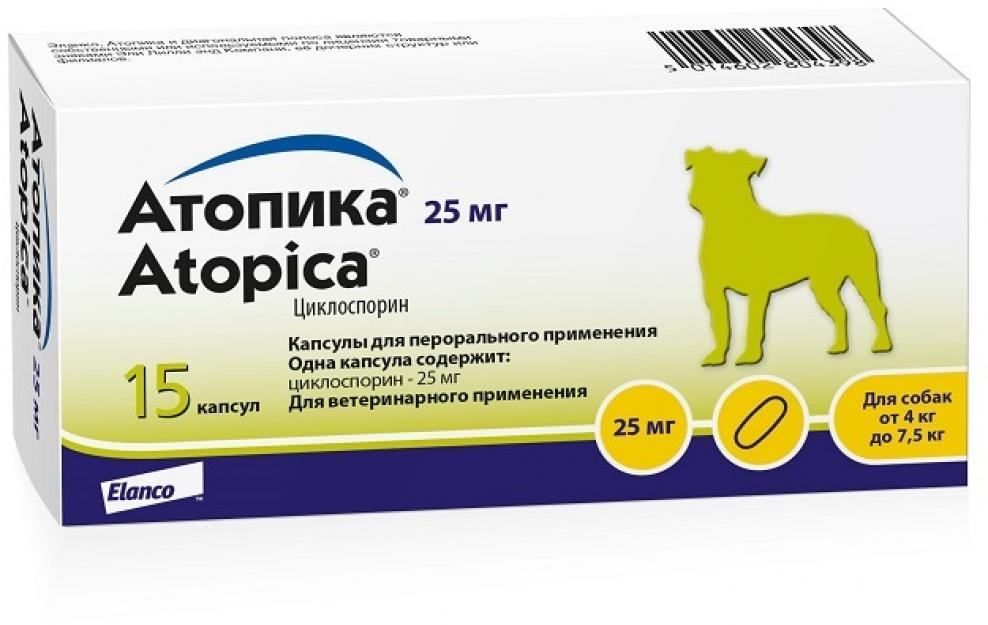 1-0.5 mg/kg twice a day is mentioned. The possibility of reducing the daily dose of cyclosporine or its distribution over several doses during the day and the option of giving the drug with food are also being considered. In most cases, the recommended measures are useful to achieve the possibility of further use of cyclosporine. However, in some cases, unfortunately, such measures do not give the expected effect: vomiting or diarrhea in patients still persist.
1-0.5 mg/kg twice a day is mentioned. The possibility of reducing the daily dose of cyclosporine or its distribution over several doses during the day and the option of giving the drug with food are also being considered. In most cases, the recommended measures are useful to achieve the possibility of further use of cyclosporine. However, in some cases, unfortunately, such measures do not give the expected effect: vomiting or diarrhea in patients still persist.
Papillomatous lesions on the skin are associated with the virus. In his practice, the author observed this problem in a two-year-old Labrador with atopic dermatitis who received cyclosporine as a therapy (Fig. 5). After discontinuation of the drug, spontaneous remission occurred – the papillomas disappeared.
Fig. 4. Hyperplasia of the gums in a dog on the background of the use of cyclosporine.
Fig. 5. Multiple papillomas on the dorsal side of the neck (left photo) and on the inside of the auricle (right photo) in a dog treated with cyclosporine.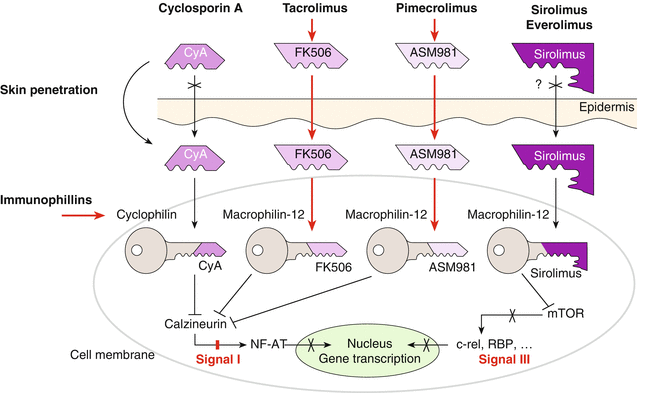
Because ciclosporin is immunosuppressive, the risk of developing neoplasia could theoretically be increased. But so far, there are no convincing data in this regard, and the authors of some publications quite reasonably believe that additional serious studies are needed for this.
Cyclosporine can inhibit p-glycoprotein, therefore, caution should be exercised when using cyclosporine and avermectins at the same time in those patients who, for whatever reason, may need this combination of drugs.
Cats, like dogs, generally tolerate ciclosporin well, but they can also have digestive problems. In addition, cases of acute toxoplasmosis have been described in cats18, so it is recommended to test cats for the presence of IgG to Toxoplasma gondii before starting the drug. We always do these tests before prescribing ciclosporin, and also screen these cats for slow-moving infections such as viral leukemia and immunodeficiency.
Doses of cyclosporine. When to observe the clinical effect?
As noted above, the initial doses for the treatment of allergic diseases (in particular, atopic dermatitis) are 5 mg/kg/day for dogs and 7 mg/kg/day for cats. When it comes to immune-mediated and autoimmune diseases, in such cases, as practice shows, the induction dose can be increased to 10 mg/kg.
When it comes to immune-mediated and autoimmune diseases, in such cases, as practice shows, the induction dose can be increased to 10 mg/kg.
The clinical effect of the use of cyclosporine is most often observed after 3-4 weeks from the start of treatment with the drug. Once remission is achieved, it is advisable to attempt a gradual reduction in the dosage of ciclosporin to 2.5 mg/kg every 48 hours19.
Terminals
- The veterinary drug Atopica (active substance – cyclosporine) is important from the point of view of clinical use in the practice of a veterinarian, since its use can be very effective in a large number of diseases.
- The drug is safe because most side effects are extremely rare and transient, making it suitable for long-term therapy.
References:
- Marsella R. Calcineurin inhibitors: a novel approach to canine atopic dermatitis. J Am Anim Hosp Assoc. 2005; 41(2): 92–97.
- Robson D. Review of the properties and mechanisms of action of cyclosporine with an emphasis on dermatological therapy in dogs, cats and people.
 Vet Rec. 2003; 152(25): 768–772.
Vet Rec. 2003; 152(25): 768–772. - Brazis P., Barandica L., Garcia F., et al. Dermal microdialysis in the dog: in vivo assessment of the effect of cyclosporine A on cutaneous histamine and prostaglandin D2 release. Vet Dermatol. 2006; 17(3): 169-174.
- Robson D. Review of the pharmacokinetics, interactions and adverse reactions of cyclosporine in people, dogs and cats. Vet Rec. 2003; 152(24): 739–748.
- Matsuda S., Koyasu S. Mechanisms of action of cyclosporine. Immunopharmacology 47:119–125, 2000. Atopica FOI, 2003.
- Thierry Olivry and Manolis Saridomichelakis for the International Committee on Atopic Diseases of Animals (ICADA): Evidence-based guidelines for anti-allergic drug withdrawal times before allergen-specific intradermal and IgE serological tests in dogs: Vet Dermatol. 2013; 24:225–e49.
- Carothers M. A., Kwochka K. W., Rojko J. L. Cyclosporine-responsive granulomatous sebaceous adenitis in a dog. J Am Vet Med Assoc. 1991; 198(9): 1645–1648.

- Linek M., Boss C., Haemmerling R., et al. Effects of cyclosporine A on clinical and histologic abnormalities in dogs with sebaceous adenitis. J Am Vet Med Assoc. 2005; 226(1): 59–64.
- Mathews K. A., Sukhiani H. R. Randomized controlled trial of cyclosporine for treatment of perianal fistulas in dogs. J Am Vet Med Assoc. 1997; 211(10): 1249–1253.
- Mouatt J. G. Cyclosporin and ketoconazole interaction for treatment of perianal fistulas in the dog. Aust Vet J. 2002; 80(4): 207–211.
- House A. K., Guitian J., Gregory S. P., et al. Evaluation of the effect of two dose rates of cyclosporine and the severity of perianal fistulae lesions and associated clinical signs in dogs. Vet Surg. 2006; 35(6): 543–549.
- Fontaine J., Heimann M. Idiopathic facial dermatitis of the Persian cat: three cases controlled with cyclosporine. Vet Dermatol. 2004; 15(s):64.
- Oliveira A. M., Obwolo M. J., van den Broek A. H., et al. Focal metatarsal sinus tracts in a Weimaraner successfully managed with ciclosporin.
 J Small Anim Pract. 2007; 48(3): 161–164.
J Small Anim Pract. 2007; 48(3): 161–164. - Guaguere E. Efficacy of cyclosporine in the treatment of idiopathic sterile nodular panniculitis in two dogs. Vet Dermatol. 2000; 11(s): 22.
- Muller and Kirk’s Small Animal Dermatology, 7th Edition, P. 706. Dahlinger J., Gregory C., Bea J. Effect of ketoconazole on cyclosporine dose in healthy dogs: Vet Surg. Jan-Feb 1998; 27(1): 64–8. Wilson L. S., Rosenkrantz W. S., Roycroft L. M. Zinc-carnosine and vitamin E supplementation does not ameliorate gastrointestinal side effects associated with ciclosporin therapy of canine atopic dermatitis: Vet Dermatol. Feb 2011; 22(1): 53–60 (doi: 10.1111/j.1365-3164.2010.00910.x).
- Last R. D., Suzuki Y., Manning T., et al. A case of fatal systemic toxoplasmosis in a cat being treated with cyclosporin A for feline atopy. Vet Dermatol. 2004; 15(3): 194–198.
- Muller and Kirk’s Small Animal Dermatology, 7th Edition, pp. 141–144.
Optimmun 3.5g – eye ointment – MSD
Optimmun 3. 5 g
5 g
Trade name of the medicinal product: Optimmune®.
International non-proprietary name cyclosporine.
Dosage form: eye ointment. In appearance, the drug is a colorless or yellow translucent ointment.
Compound
Optimmun contains cyclosporine A as an active ingredient – 2.0 mg/g; other ingredients: white soft paraffin, corn oil, Amerchol CAB (petrolatum and lanolin alcohol).
Pharmacological properties
Optimmun is an immunosuppressive drug.
Ciclosporin A, which is part of the medicinal product, is a cyclic polypeptide produced by the fungus Tolypocladium inflatum gans. It is an immunosuppressive agent with anti-inflammatory and lacrimomimetic action. The immunosuppressive and anti-inflammatory effect of cyclosporin A is associated with blocking at the cellular level of lymphocytes resting in the G0 or G1 phases of the cell cycle, suppression of the production and secretion of cytokines (including interleukin-2, T-lymphocyte growth factor) triggered by anti-lymphocytes. Cyclosporine has a reversible effect on lymphocytes.
Cyclosporine has a reversible effect on lymphocytes.
This restores the function of the acinar cells of the secretory epithelium of the lacrimal gland and reduces the infiltration of eye tissues. As a result of the anti-inflammatory effect of the drug, the condition of the eye improves: conjunctival hyperplasia decreases, with prolonged use, neovascularization and corneal pigmentation decrease.
In addition to its immunosuppressive activity, cyclosporin A has a direct lacrimimetic effect by blocking the suppression of tear production by prolactin. Thus, increased tearing under the influence of Optimun is identical to natural.
Cyclosporine A is highly lipophilic and easily penetrates into the cornea and lacrimal gland. Cyclosporine A is deposited in the cornea, weakly penetrates into the internal environment of the eyes, is practically not absorbed into the bloodstream and does not have a systemic effect on the body.
Optimmun, according to the degree of impact on the body, belongs to low-hazard substances (hazard class 4 according to GOST 12. 1.007-76).
1.007-76).
Application procedure
Optimmun is used in dogs for the treatment of autoimmune ocular diseases, including idiopathic keratoconjunctivitis sicca (KCM, dry eye syndrome), plasma infiltration of the third eyelid, and chronic superficial keratitis (pannus).
The drug may be used to enhance the effect of topical corticosteroids or instead of them when corticosteroids are contraindicated (eg, in corneal ulcers).
Before applying the ointment, the affected eye is washed with special ophthalmic solutions and the eye area is thoroughly cleaned. A small amount of ointment (1/2-1 cm) is applied directly to the cornea or put into the conjunctival sac every 12 hours, without touching the tip of the tube to the surface of the eye, eyelids or other surfaces. The duration of therapy depends on the severity of the lesion and the response to treatment.
Increased tear production is expected within 10 days of initiation of the drug, but maximum tear production may take up to 6 weeks. In the treatment of dry keratoconjunctivitis, it is recommended to evaluate the effectiveness of the drug using the Schirmer test. For a correct interpretation of the results, the Schirmer test is recommended to be performed 3 hours after the application of Optimun, when the concentration of cyclosporine in the cornea is maximum. The best treatment results can be achieved with the use of Optimun in the early stages of SBS, when irreversible damage and fibrosis of the tissues of the lacrimal gland has not occurred. In most cases of SBS and pannus, dogs need lifelong treatment, but with proper therapy and regular examinations, the prognosis is good.
In the treatment of dry keratoconjunctivitis, it is recommended to evaluate the effectiveness of the drug using the Schirmer test. For a correct interpretation of the results, the Schirmer test is recommended to be performed 3 hours after the application of Optimun, when the concentration of cyclosporine in the cornea is maximum. The best treatment results can be achieved with the use of Optimun in the early stages of SBS, when irreversible damage and fibrosis of the tissues of the lacrimal gland has not occurred. In most cases of SBS and pannus, dogs need lifelong treatment, but with proper therapy and regular examinations, the prognosis is good.
In pannus, due to the influence of environmental factors (such as ultraviolet) on the pathogenesis, the need for optimune may decrease during periods of reduced solar activity, and during periods of exacerbation of the disease, the use of optimune is restored.
Contraindications
It is forbidden to use Optimune in eye diseases of fungal and viral etiology.
Optimmun is not intended for use in food producing animals.
Application features
Prolonged use of Optimune does not increase the susceptibility of the eye to microbial infections.
The effectiveness of Optimun has not been established in keratoconjunctivitis sicca due to congenital alacrymia, use of sulfonamides, carnivorous plague virus, metabolic disorders, surgical removal of the lacrimal gland of the third eyelid, facial paralysis with loss of palm.
In the first days of the use of Optimune, mild irritation is possible, if the irritation does not go away, the use of the drug is stopped. If allergic reactions occur, the use of Optimun is stopped and symptomatic therapy is carried out.
Optimmun should not be used in pregnant bitches due to lack of safety data.
Omission of the next dose should be avoided, as this may lead to a decrease in its therapeutic efficacy. If you miss one dose, you must enter it as soon as possible, then continue treatment according to the main scheme.
Continuity is important in the treatment of SBS, studies have shown that tear stimulation ceases within 24 hours of cessation of therapy.
Optimmun does not exclude the use of drugs of other pharmacological groups.
Overdose
Symptoms of overdose when used in accordance with this leaflet have not been established. In rare cases, there is inflammation and swelling of the skin of the eyelids, caused by an excessive amount of ointment. In this case, the dose of the applied drug should be reduced.
Side effects
As a rule, side effects and complications are not observed when using the drug according to this instruction. With increased individual sensitivity to the components of the drug and the appearance of allergic reactions, the use of optimune is stopped.
Measures of personal prevention
When working with Optimun, you should follow the general rules of personal hygiene and safety precautions provided for when working with drugs.
Do not drink, smoke or eat while working. After finishing work, hands should be washed with warm water and soap.
Empty drug containers must not be used for household purposes and must be disposed of with household waste.
People with hypersensitivity to the components of the drug should avoid direct contact with optimune. In case of accidental contact of the drug with the skin or mucous membranes, they must be washed with plenty of running water. If allergic reactions occur or if the drug accidentally enters the human body, you should immediately contact a medical institution (you should have instructions for using the drug or a label with you).
Release form
Optimmun is packaged in 3.5 g aluminum tubes with a white plastic tip and is screwed on with a cap. Tubes are packed in individual cardboard boxes along with instructions for use.
Storage
Optimmun is stored in the manufacturer’s sealed packaging, away from food and feed, in a place protected from direct sunlight at a temperature of 2 to 25 °C. Optimmun should be kept out of the reach of children.
Optimmun should be kept out of the reach of children.
Best before date
The shelf life of the medicinal product under the conditions of storage in the manufacturer’s closed packaging is 2 years from the date of production, after the first opening of the tube – 28 days.
Do not use the drug after the expiration date.
Dispose of unused drug in accordance with legal requirements.
Optimmun is available without a prescription from a veterinarian.
Optimmun 3.5g – eye ointment – MSD is a great choice if you are looking for Animal ointments for your
pet. Veterinary drugs are always available for order.
Veterinary preparations: Express test Cat panleukopenia (distemper) Ag Test (FPV Ag) or Canvit Biotin – for cat hair during shedding, 100g – Canvit is always available
buy at the best price with delivery. Zoohub Zoo Pharmacy has a wide
selection of medicines for animals: vaccines, serums and vitamins for
animals, Canvit Chondro for cats – for joint health in cats – No.

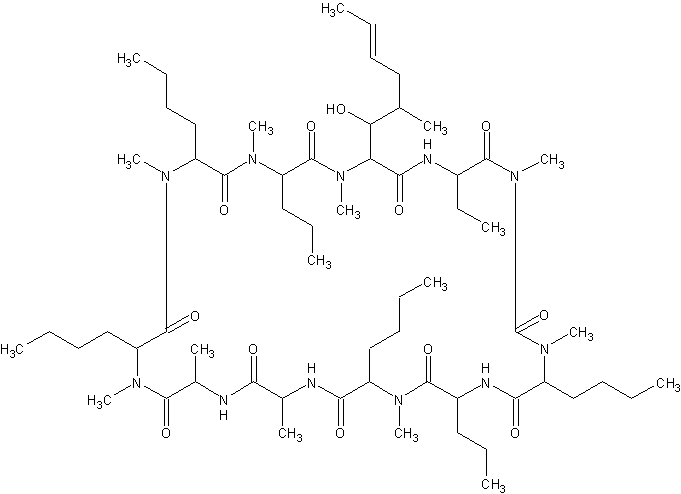



 So these drugs can’t be used interchangeably without the supervision of a healthcare provider.
So these drugs can’t be used interchangeably without the supervision of a healthcare provider. Vet Rec. 2003; 152(25): 768–772.
Vet Rec. 2003; 152(25): 768–772.
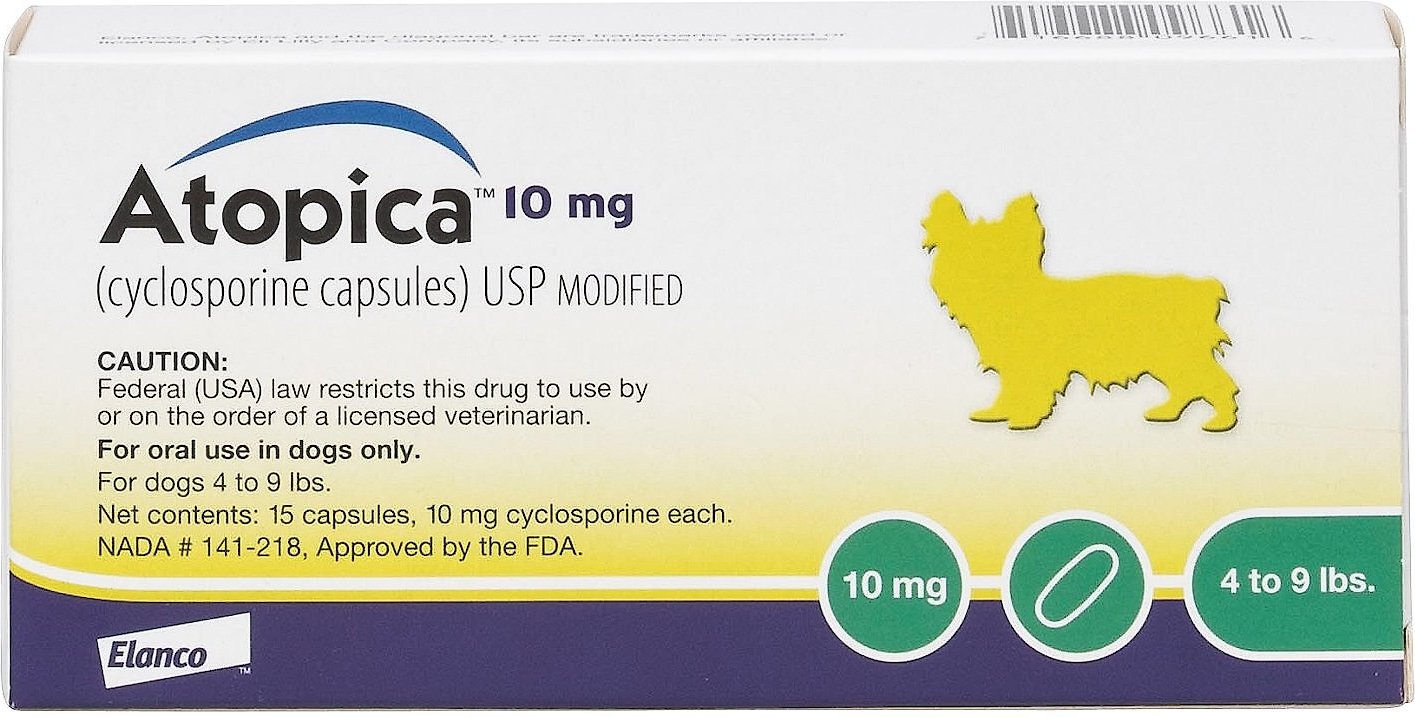 J Small Anim Pract. 2007; 48(3): 161–164.
J Small Anim Pract. 2007; 48(3): 161–164.